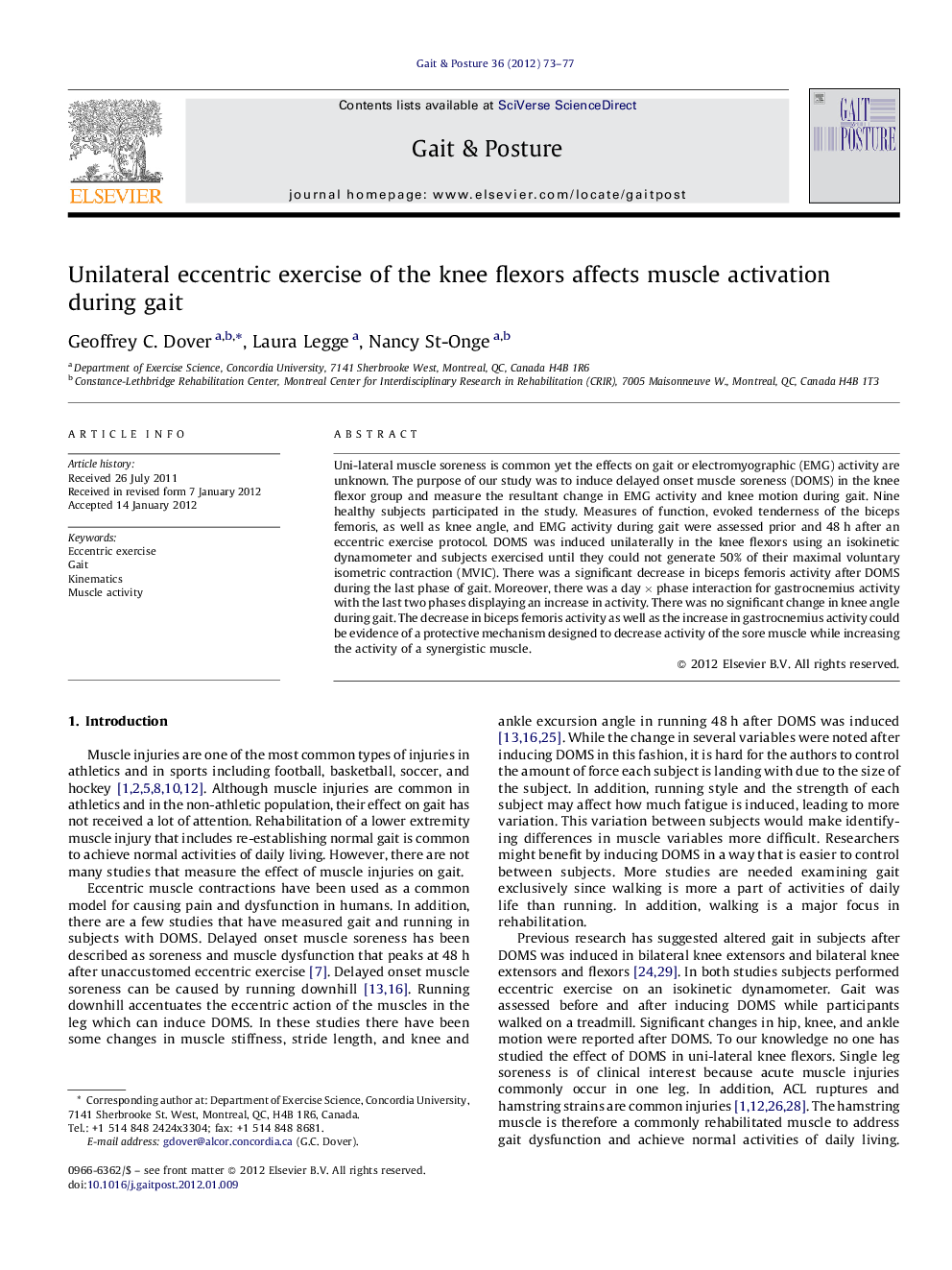| Article ID | Journal | Published Year | Pages | File Type |
|---|---|---|---|---|
| 6207435 | Gait & Posture | 2012 | 5 Pages |
Uni-lateral muscle soreness is common yet the effects on gait or electromyographic (EMG) activity are unknown. The purpose of our study was to induce delayed onset muscle soreness (DOMS) in the knee flexor group and measure the resultant change in EMG activity and knee motion during gait. Nine healthy subjects participated in the study. Measures of function, evoked tenderness of the biceps femoris, as well as knee angle, and EMG activity during gait were assessed prior and 48 h after an eccentric exercise protocol. DOMS was induced unilaterally in the knee flexors using an isokinetic dynamometer and subjects exercised until they could not generate 50% of their maximal voluntary isometric contraction (MVIC). There was a significant decrease in biceps femoris activity after DOMS during the last phase of gait. Moreover, there was a day Ã phase interaction for gastrocnemius activity with the last two phases displaying an increase in activity. There was no significant change in knee angle during gait. The decrease in biceps femoris activity as well as the increase in gastrocnemius activity could be evidence of a protective mechanism designed to decrease activity of the sore muscle while increasing the activity of a synergistic muscle.
⺠We measured gait changes after exercise induced damage in the unilateral hamstring. ⺠DOMS did not significantly change knee angle during gait. ⺠There was a decrease in biceps femoris activity and an increase in gastrocnemius activity after DOMS during gait. ⺠The change in muscle activity could be a centrally controlled protective mechanism.
